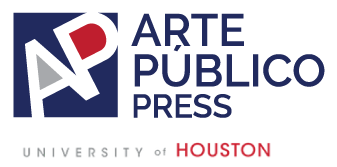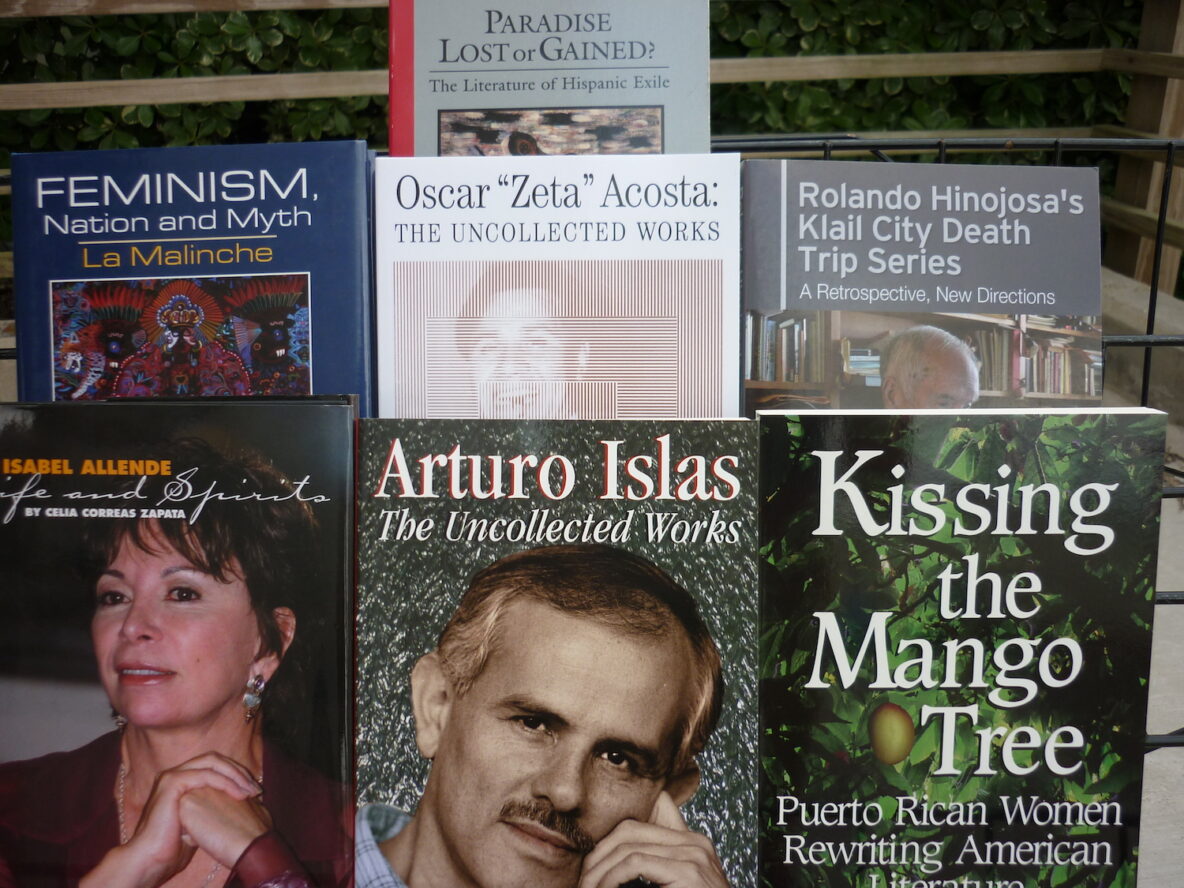MUSEUM SURVEY
Survey of Small Historical Societies, Libraries and Museums for Hispanic Materials and Their Management was supported by a grant from the National Endowment for the Humanities (NEH).
Narrative Description
Over the course of the twentieth century, commensurate with the growth of the Latino population, many local libraries, historical societies, small museums and collections in the Southeast and Southwest of the United States have become repositories of Hispanic/Latina/o materials. However, these valuable collections are often not cataloged, not well documented and, in many cases, are unknown to the scholarly community potentially interested in them.
From 2017 to 2021, Recovering the US Hispanic Literary Heritage conducted surveys of these small institutions to see if they held Hispanic archival materials and to assess how they were preserved and made accessible. The survey results are herein published to serve as a guide to Hispanic materials at small institutions in the southern band of states from Florida to California. In summary 834 surveys were distributed. As a result, we were able to include information on the 136 institutions included in our map (below). This final “Guide” published herein includes the full report of holdings of these institutions, the types of institutions and their needs; in these, there was a considerable amount of Hispanic archival materials identified. They have the potential of serving as a rich source of original documents and artifacts for scholars and students, not only for academics removed by geographic distance but also for teachers and students residing close to these institutions.
Recovering the US Hispanic Literary Heritage is grateful to the National Endowment for the Humanities for funding the two stages of this project.
Nicolás Kanellos, Ph. D.
Brown Foundation Professor of Hispanic Studies
Director, Recovering the US Hispanic Literary Heritage


Digital Map
Map Guide
This map was developed using information provided by the institutions that responded to the survey. The information that can be found for institutions that fall under this category is: the direct web link, institution type, city, state, physical address, Latino materials and collection themes. Those institutions that did not respond to the survey were researched throughout the process of the project. For these institutions the map provides the website, type of institution, city, state, physical address and possible Latino materials. The different types of institutions, indicated in the map key, are as follows: museum, genealogical society, historical society, library, archive, university or college and local community organization.
To interact with the full-screen version of this map, please visit: https://recoveryapp.github.io/NEHmap/index.html
Research Guide
The following data was collected by Recovery researchers and includes all small institutions researched that may contain Hispanic materials. This dataset contains information on the possible Latino materials and themes for the institutions that did respond to the survey.
Survey Data
The platform used to conduct this survey was Google Forms, allowing the data collected to be easily transferred to editable spreadsheets. Of the 834 surveys that were sent out 79 institutions participated. In addition to the Hispanic related materials in their collections, the dataset includes contact information, including email, phone and names. For those that responded vaguely, there are follow-up responses that were done after the initial survey, by Recovery researchers.
Survey dataset for download is forthcoming.
The survey questions included were as follows:
- Contact information.
- What type of organization best describes you?
- Genealogical society
- Public library
- Museum
- University or college
- Other
- What types of materials related to Latino history or Hispanic culture does your institution hold?
- Newspapers
- Letters or correspondence
- Photographs
- Artifacts
- Books
- Pamphlets
- Newsletters
- Audio or visual (for example: audio cassettes, video cassettes, records or compact disks)
- Manuscripts
- Other
- Enter the approximate number of Latina/o or Hispanic items in your collection for each selected format type above.
- Select the major themes that your institution's Latina/o or Hispanic collections relate to (check the top 3 themes):
- Religion
- Local History
- Women & Gender
- Race & Ethnicity
- Literature
- Latino Studies
- Art
- Linguistics
- Genealogy
- What is the size of your institution?
- 1-3 Professional staff (paid employees)
- 3-10 Professional staff (paid employees)
- 10+ Professional staff (paid employees)
- Only volunteers work at your institution (no paid staff)
- What is the overall condition of your materials?
- Not sure
- Fragile
- OK
- Good
- Excellent
- What services are you able to provide for access to your Latina/o or Hispanic materials? Check all that apply (Example: We are able to provide reference services for our Latina/o genealogy materials).
- Reference
- Digitization
- Exhibits
- Teaching/instruction
- Other
- What type of training would your institution be interested in to help create greater access to your collections? Please rank these in order (1 being most interested).
- Digitization
- Archival basics
- Teaching/instruction
- Preservation
- Exhibit development
Protocols
Project Description and Purpose
The Survey of Small Historical Societies, Libraries, and Museums for Hispanic Materials and Their Management is a National Endowment for the Humanities-funded project conducted by Recovering the US Hispanic Literary Heritage (Recovery).
The intent of this survey was to identify Hispanic materials in small and midsize institutions and to work collaboratively with the staff of those institutions to preserve and make accessible the documented history of the Hispanic/Latino communities. It was determined that the survey results would be published online and become the basis for a guide to Hispanic materials at small institutions.
Compiling the Data
Recovery researchers worked collaboratively to create a dataset which comprised institutions from the southwest and southeast including, Alabama, Arizona, Arkansas, California, Colorado, Florida, Louisiana, Missouri, Kansas, Mississippi, New Mexico and Texas. The database was intended to be published online, taking into account that the included information was openly available and therefore there were no ethical constraints.
The information that was gathered for each institution (if available) was: name, address, webpage, contact email and telephone number. If there was a specific contact person, then that information was also included.
Once the list dataset was compiled, the Recovery team sent the survey to each institution via email. Participation was voluntary, but due to the fact that it led to collaboration and support from the University of Houston and its experts in preserving, digitizing, and promoting the materials, there were follow-ups for those institutions that did not immediately respond, giving them the opportunity to become familiar with the benefits.
Interpretation of the Data and Workshop
The returned surveys were followed up by phone calls and emails for clarification and additional information. After careful consideration, the Recovery program and the University of Houston libraries invited selected directors, staff members or volunteers of the institutions that responded to the survey to a meeting in Houston to:
1) review and interpret the findings of the survey
2) interpret the guide and its potential use
3) have a panel of UH library experts deal with specific issues that arose during the survey
4) offer a brief for the University of Houston Libraries professionals to offer consultations to help the small institutions stabilize their collections and upgrade their preservation techniques and accessibility
Overall, the leadership of University of Houston Libraries’ and Recovery offered training, support and material resources to these small institutions so that they could improve their preservation techniques, make their collections more accessible, including marketing to networks of scholars researching both English and Spanish language materials.
Creation of the Digital Map
In addition to publishing the raw data for the use of the public, Recovery’s digital humanists utilized the data gathered over the course of the project to create an interactive map that visualized the findings of the investigation. The map was created using Leaflet, with the Google Sheets template created by Ilya Ilyankou and Jack Dougherty, included in the book Data Visualization for All (https://datavizforall.org/). Coordinates were automatically generated using Google geocoder using the city and state for each periodical. For those organizations that only listed PO boxes, the coordinates for the nearest US postal office in the listed zip code was used. For organizations with no addresses/no physical building, the coordinates for the center of the area were used (for example: the capital for a state historical society, the central point of a geographic region for organizations dedicated to specific city/state areas, such as Southwest New Mexico or East LA).
Resources
Resources compiled by Elizabeth Cruces, M.A., Hispanic Collections Archivist, University of Houston Libraries
PRESERVATION
“Preservation Week,” The American Library Association. http://www.ala.org/alcts/preservationweek
CONSERVE O GRAMS
Short, focused leaflets about caring for museum objects, published in loose-leaf format. New topics are added as needed and out-of-date issues are revised or deleted. Semiannual supplements will be issued for an indeterminate period.
https://www.nps.gov/museum/publications/conserveogram/cons_toc.html#collectionpreservation
DIGITAL PRESERVATION
American Library Association http://www.ala.org/alcts/preservationweek/howto/digital-preservation-tips
Digital Preservation Outreach & Education http://www.digitalpreservation.gov/education/curriculum.html
Library of Congress, Personal Archiving (standards and basics) http://digitalpreservation.gov/personalarchiving/
BIBLIOGRAPHIC REFERENCES
Center for Digital Scholarship and Curation, “Steps for Creating a Deed of Gift.” Washington State University, 20018. sustainableheritagenetwork.org.
Collection Development Tools and Guidance. The National Archives, UK, 2011. http://www.nationalarchives.gov.uk/archives
Describing Archives: A Content Standard. Second edition. The Society of American Archivists, Chicago, 2013.
Mannon, Melissa. “Collaborative Collection Development.” Managing Archival Collections, vol. 1, no. 3, 2001-2002.
Credits
2020-2021
PI
Nicolás Kanellos, PhD
USLDH Team
Gabriela Baeza Ventura, PhD
Carolina Villarroel, PhD, CA
Lorena Gauthereau, PhD
Linda García Merchant, PhD
Research Assistants
Maribel Bello
Roselia Bañuelos
Julio Antonio Molinete
María Sánchez Carbajo
2017-2018
PI
Nicolás Kanellos, PhD
USLDH Team
Gabriela Baeza Ventura, PhD
Carolina Villarroel, PhD, CA
Lorena Gauthereau, PhD
Research Assistants
Isis Campos
Victoria Moreno
Sylvia Fernández
Annette Zapata






